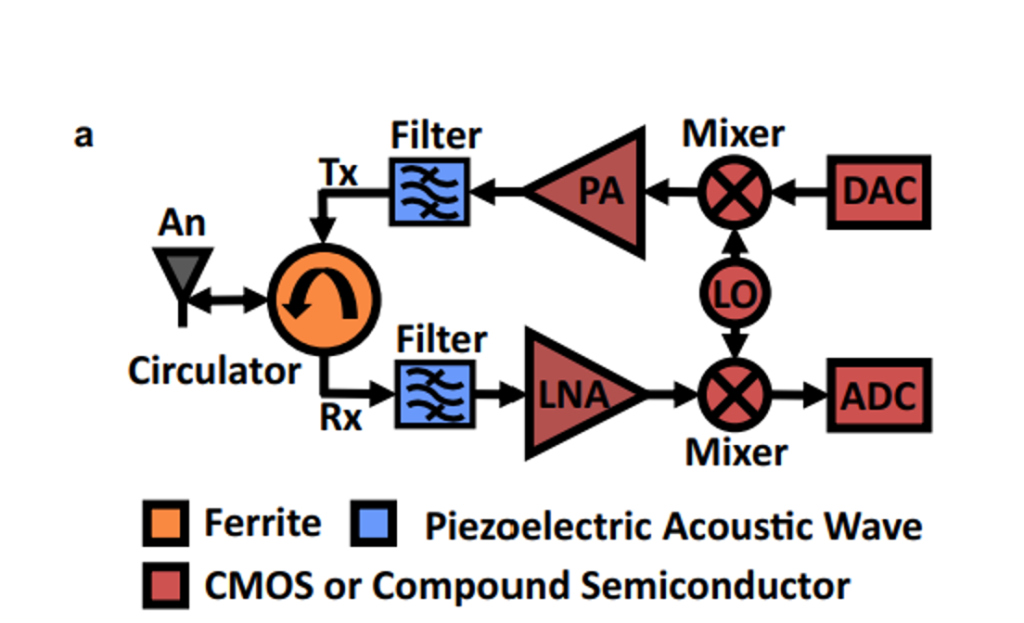RF signal processing with phonons
Current RF front ends use high performance acoustoelectric filters and duplexers joined with transistor based amplifiers, mixers, and oscillators. Joining these two types of units requires at least two chips due to the high variation in performance of acoustoelectric and transistor based filters. Typically more than two chips are used to avoid the high manufacturing costs associated with requiring custom circuits. These multi-chip modules inherently limit the miniaturization of RF processing systems, which is a necessity for size, weight, and power limited systems varying from wearable consumer electronics to high end guidance systems.

Our group seeks to solve this by developing the first all acoustic RF front end. A recent step towards this is described in our recent Nature Communications paper by Hackett et. al. [1], wherein an all acoustic RF signal processing unit featuring passive filtering, circulators, and amplifiers is developed, fabricated, and characterized.

Reference
[1]: Hackett, Lisa, et al. “Towards single-chip radiofrequency signal processing via acoustoelectric electron–phonon interactions.” Nature communications 12.1 (2021): 2769.
Single-phase unidirectional inter-digital transducers
SPUDTS, or single-phase unidirectional inter-digital transducers, are piezo-electric transducers that launch single-phase Surface Acoustic Waves, or SAWs, with amplitude higher in one direction than another. The SAW waves are launched by patterning metal electrodes on the surface of a piezo-electric crystal, such as LiNbO3, with electrode distance on the order of the SAW wavelength of the crystal. The electrodes strain the crystal via the converse piezo-electric effect by
emitting an electrical signal of the right frequency. If the electrodes are spaced properly, the waves will constructively interfere with one another, launching a SAW wave in both directions.
Electrically floating metal reflectors are placed throughout the SPUDT to cause the backward-moving SAW to interfere with itself destructively—these interference effects cause the transducer to develop directionality. The reflections occur due to an interface between the piezo-electric material and the reflector, causing a change in SAW phase velocity, forcing some of the SAW to be reflected.
We are using SPUDTs to launch SAWs unidirectionally for use in an on-chip Acoustic-Optical Modulator, which via Brillouin scattering, can change the mode of an optical waveguide stacked on top of the SPUDT. Integrating such a device into our current quantum photonic integrated circuit platforms would considerably increase our control over our quantum systems.

